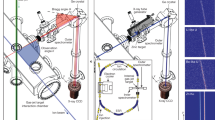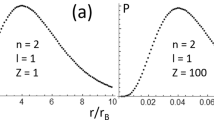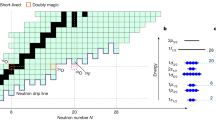Abstract
IT is well known that, owing to the prohibitive nature of the general problem of three (or more) bodies, Bohr's quantum theory has proved so far to be unable to account for any spectrum lines but those forming a series of the simple Balmerian type, i.e. where N is the familiar Rydberg constant given by 2π2me4/ch3, and κ the number of unit charges contained in the nucleus, or the atomic number. Apart from X-ray spectra of the higher atoms, for which κ is replaced empirically by a smaller and not necessarily a whole number (Moseley, Sommerfeld), and where the requirements of precision are not high, this simple type of formula covers, as a matter of fact, only the spectra of atomic hydrogen (κ = 1) and of ionised helium (κ = 2), which, having been deprived of one of its electrons, presents again the same problem of two bodies as the hydrogen atom. Accordingly, the known spectrum series of He+, the ultraviolet Lyman series, the principal or Fowler's series, and the Pickering series, are all of the simple Balmer type, with n= 2, 3, 4 respectively.
This is a preview of subscription content, access via your institution
Access options
Subscribe to this journal
Receive 51 print issues and online access
$199.00 per year
only $3.90 per issue
Buy this article
- Purchase on Springer Link
- Instant access to full article PDF
Prices may be subject to local taxes which are calculated during checkout
Similar content being viewed by others
Author information
Authors and Affiliations
Rights and permissions
About this article
Cite this article
SILBERSTEIN, L. Some Spectrum Lines of Neutral Helium derived theoretically. Nature 110, 247–249 (1922). https://doi.org/10.1038/110247b0
Issue Date:
DOI: https://doi.org/10.1038/110247b0
Comments
By submitting a comment you agree to abide by our Terms and Community Guidelines. If you find something abusive or that does not comply with our terms or guidelines please flag it as inappropriate.



